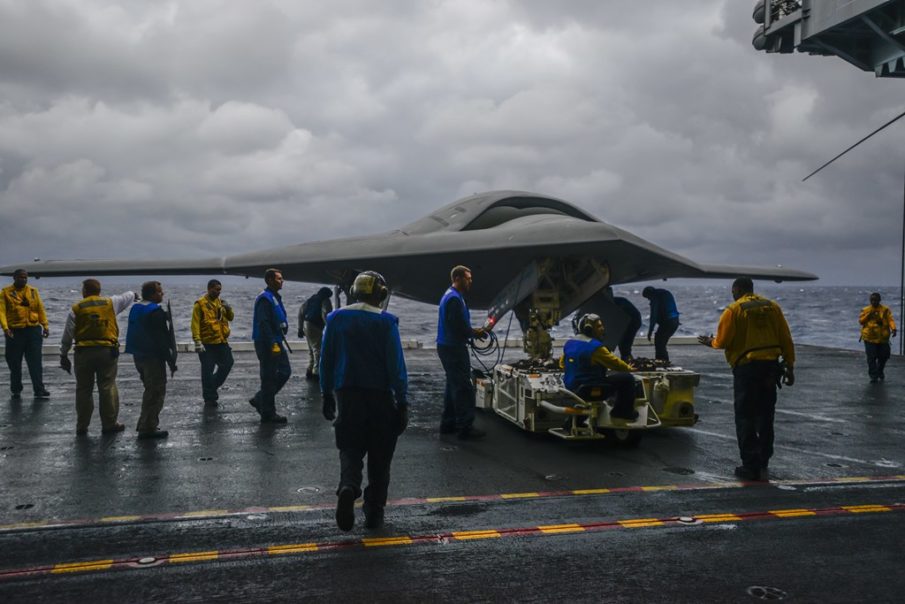Following Vladimir Putin’s national address to the Russian people last month, in which he discussed a number of new missile technologies the Russian military is working to deploy, there has been a resurgence in discussion about America and Russia entering into a “new” Cold War.
Depending on your perspective, there are a number of issues that could be raised with such a declaration. The Cold War was, at its heart, a conflict borne out of economic ideologies, whereas tensions today are born out of political ones, for instance. Also, this modern incarnation of the “Cold War” is not simply between the United States and Russia – as Russia lacks the economy, as well as the resources, to compete in a defense technology build off… but they have an ace up their sleeve in the form of the aggressively expanding Chinese military. If a new Cold War is in bloom, one can’t ignore the Chinese elephant in the room.
However, despite the semantic arguments one can make about whether or not America’s current defense position is a continuation of the ongoing Cold War, the start of an entirely new one, or rather a more nefarious progression toward global conflict – there’s one aspect of Cold War defense policies that has reemerged without question: a technological arms race.
“We need to scale up in a wildly unpredictable environment, as we see the reemergence of true existential threats. We face a new era of great power competition,” Vice Adm. Bill Moran, Vice Chief of Naval Operations, said to an audience at the annual Navy League Sea Air Space Symposium this week.
“We need to act with a sense of urgency,” Moran stressed.
In recent years, Russia and China have both unveiled new intercontinental ballistic missile platforms, both employing MIRV systems that allow the deployment of multiple warheads as well as dummy components intended to confuse inbound interceptors. These platforms were designed specifically with America’s missile defense infrastructure in mind – and they’re far from the only new platforms to be developed with America in their sights.
Hypersonic anti-ship missiles aim to make America’s aircraft carriers obsolete. Anti-satellite weapon systems have been built and tested that would interfere with or destroy America’s constellation of GPS, communications and reconnaissance satellites. Doomsday weapons like Russia’s 100 megaton “Status 6” nuclear drone submarine could destroy whole cities and drown the surrounding area in a radioactive tidal wave.
While the United States was focused on fighting insurgencies and maintaining legacy systems, the rest of the world kept on developing, closing the technological gap between national militaries, and bringing America’s supremacy into question. Now, according to Moran, the Navy needs to move to streamline the way in which our military adopts new technologies in order to continue to serve not only as a deterrent against future aggression, but to secure victory if ever this new (or old) Cold War were to turn hot.
“We dominated technology after WWII. We dominated the maritime domain after fall of Berlin wall. We dominated innovation throughout the 20th century. We cannot cede space to authoritarian competitors. We have to be ready to win the peace again,” Moran said.
In order to do that, Moran went on, the Navy will need to expedite the ways in which it brings in new technologies and implements them into America’s defense apparatus.
“We cannot afford to play cat and mouse games with contracting requirements,” Moran explained about the defense acquisition process.
Already have an account? Sign In
Two ways to continue to read this article.
Subscribe
$1.99
every 4 weeks
- Unlimited access to all articles
- Support independent journalism
- Ad-free reading experience
Subscribe Now
Recurring Monthly. Cancel Anytime.
That same process has been a focal point of Defense Secretary James Mattis since being appointed by President Trump, as part of a force wide endeavor to increase readiness and modernize the Defense Department. In fact, Patrick M. Shanahan, Deputy Director of Defense under James Mattis, recently said that one of the ways the Defense Department intends to streamline the adoption of new technologies is to “rip off and deploy,” which is essentially using the research and development already being done in the private sector to develop new systems.
“The mindset has always been, ‘We’ll grow it ourselves — it’ll be organic.’” He explained. “In days gone by, the Defense Department did a lot of research and development that later was leveraged in the private sector. Now, much of the private sector’s research and development can be useful to the Defense Department.”
“That also gives us a chance to bring new companies, new ideas, and expand the people that we work with in the Department of Defense.”
Image courtesy of the Department of Defense









